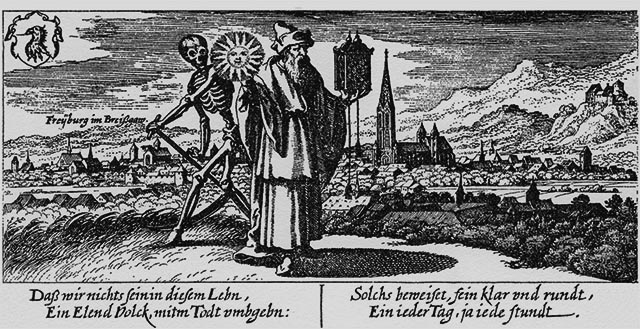
Clocks Made of Iron – Time-Keeping around 1500
The first clocks to use gears were developed around 1300. These clocks were weight-driven and had a swinging balance as an escapement as well as a striking train for the hour bells. The movement was made of wrought iron.
At first, the new clockwork mechanisms were chiefly large in size, being used in church towers and town halls; as from the 15th century they also were used in small wall clocks.
These early clocks were not very precise and only had an hour hand. Sundials, found on many house facades, were used to set the clocks.
There still was no uniform regulation for dividing the day into units of time. In some places, the new day was considered to begin at sundown. Some cities even had hours of different lengths, depending on the season.
Other timekeeping instruments would be used for determining the shorter time intervals. In candle clocks or oil lamps, the melted wax or burnt oil served as a measure of elapsed time.
The hour-glass came to be known as from the late Middle Ages.